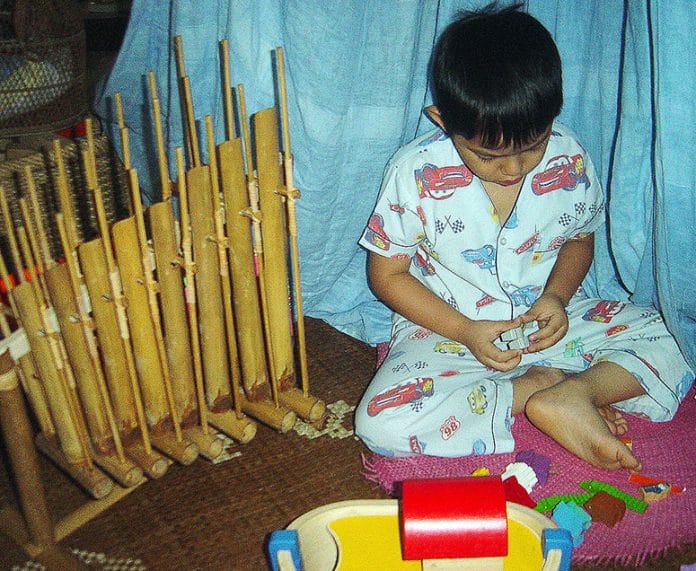There are marked differences between a typical Filipino home and a Waldorf home. For example, the latter is usually more quiet, harmonious, and devoid of some objects that are often found in other homes, like television or children’s toys that are made from synthetic materials.
Waldorf here refers to Waldorf Education, a wholistic approach wherein the child is recognized for his or her physical abilities and mental development while integrating his soul and spiritual development and identity. The arts—visual, music, drama, movement, speech, etc.—and nature itself are an important part of this educational system.
For example, the home is more quiet because one wouldn’t hear the usual blare coming from the TV or computers. It isn’t that TVs, radios, computers, and electronic gadgets are banned, they are simply kept to a minimum and stashed away from young children. Instead, nurturing sounds that enrich the senses are encouraged—like laughter and conversation, or music from instruments that the children play.

Property Report PH talked to Tet Mora, mom to a 17-year-old boy and a 15-year-old daughter who have both been enrolled in Waldorf schools since their kindergarten years. Tet is herself a Waldorf teacher, teaching associate at the UP Child Development Center, and the coordinator for Emergency Pedagogy Pilipinas (EPP), a Waldorf-based approach in responding to psycho-social support of children during times of disaster.
Tet shares, “In academic circles, Waldorf Education is considered to belong to the Romantic stream of education, with its anchor in Anthroposophy, spirit, and the arts.” She adds further, “In the practical application of the pedagogy, it carries the same principles and values as progressive schools—that the Child is the basis for the curriculum.”

Building a home that aligns with her beliefs and educational goals for her children has not been an easy journey. But through the years, she has gathered the knowledge and courage to do so from her understanding of the principles of the pedagogy and from the support of like-minded families in the community.
Living the waldorf way
Tet Mora, Waldorf teacher and teaching associate at the UP Child Development Center, shares the following tips for homemakers who may be interested in integrating nurturing elements in their homes. It is especially important for our children to have these elements “especially at this time when they are limited in movement and social interaction,” she says.
1. Use natural materials as much as you can. Natural materials have fine details, comfort, and tactile experiences that are quite educational in fine-tuning the senses of your children.
2. Have a play corner where your child can create their own world. This will give them the space to be more imaginative and to create their own “world” when the world outside is not as accessible now.

3. Bring quiet time into the home. Silence is one of the least appreciated elements in the home, but it can be very nurturing especially in times of uncertainty and chaos. Gift your children with the experience of hearing the birds, wind, chimes, and so on; and of seeing fireflies, reading books, watching the sky, playing with board games, etc.
4. Bring nature indoors. Use plants, found leaves, rocks, flowers, twigs, etc. to let children touch, smell, and experience the cycle of the year even as they are staying indoors.
5. Bring music into your home. Sing to your children or play musical instruments (acoustic is better) to give them not just the experience of music but the feel, timber, vibration, and tone that are unique to a live music compared to a canned one.
6. Enjoy the festivals! Mark the changing of the seasons and of time by celebrating festivals. For example, St John’s in June, Michaelmas in September (conquering the darkness in the coming of darker days), Martinmas in November (experience of lighting lanterns during dark nights), Advent and Christmas in December (the preparation to meet the true light in darkness), and many more. Activities during these festivals can be imaginative, creative, and soulful to make the experience specially meaningful for everyone.
7. Just enjoy the process. Do not be too engrossed in making things perfect. Connect to that which gives you quiet joy. The external trimmings and activities may be sensibly pared down so that the meaning and essence of the experience remain.
